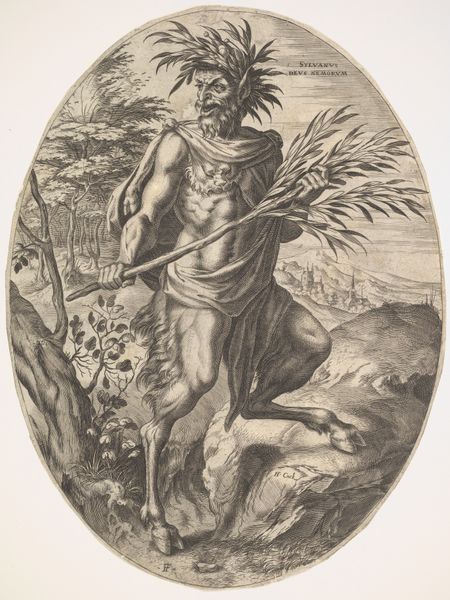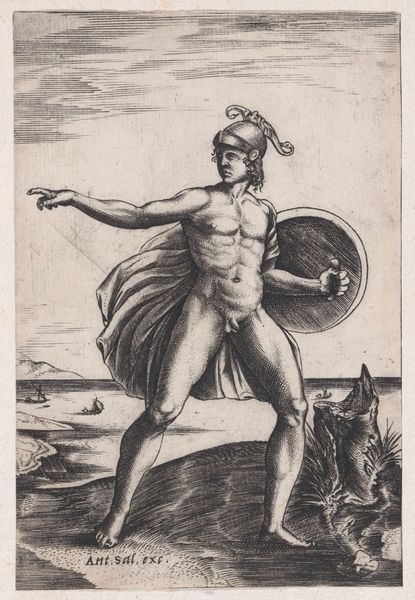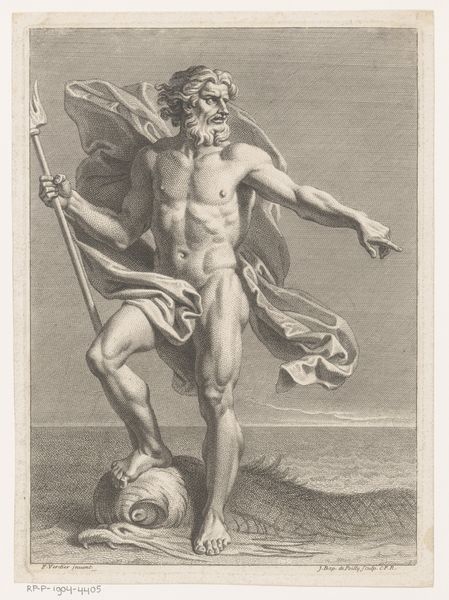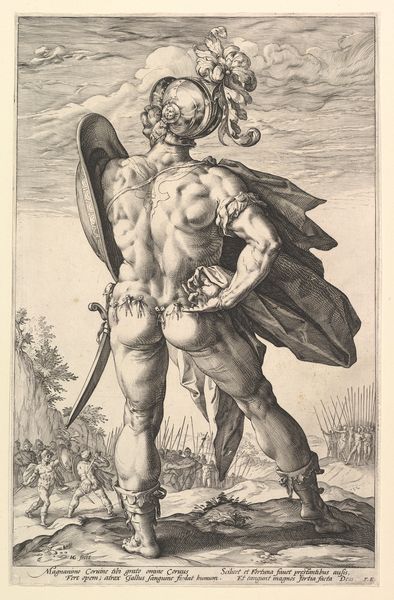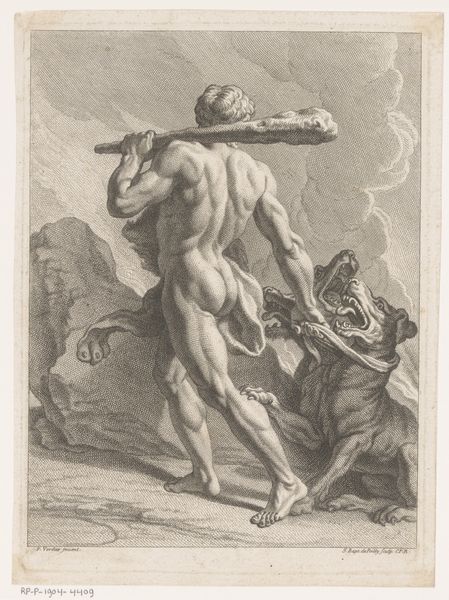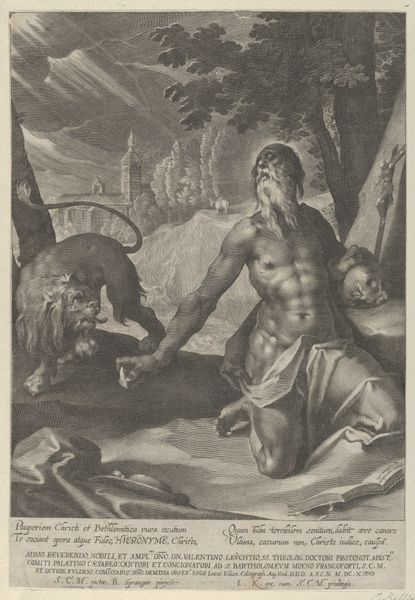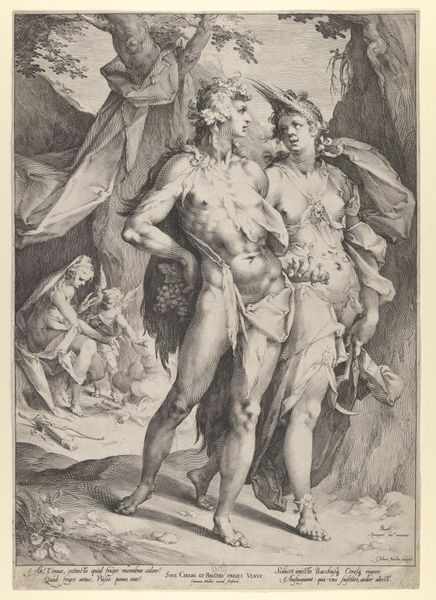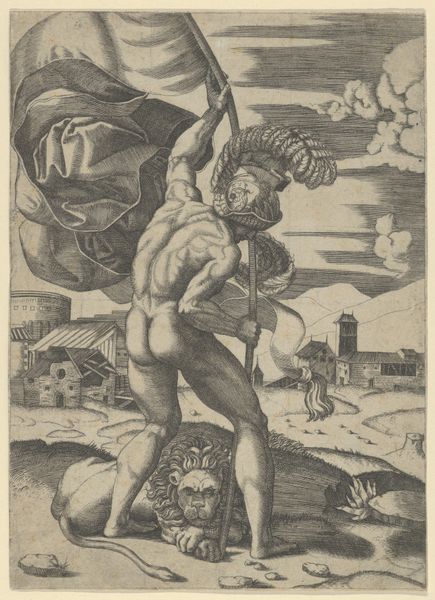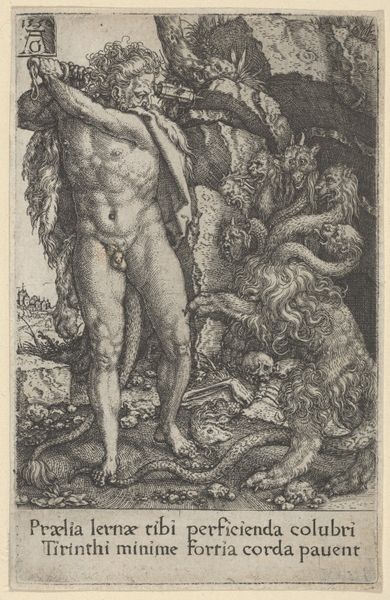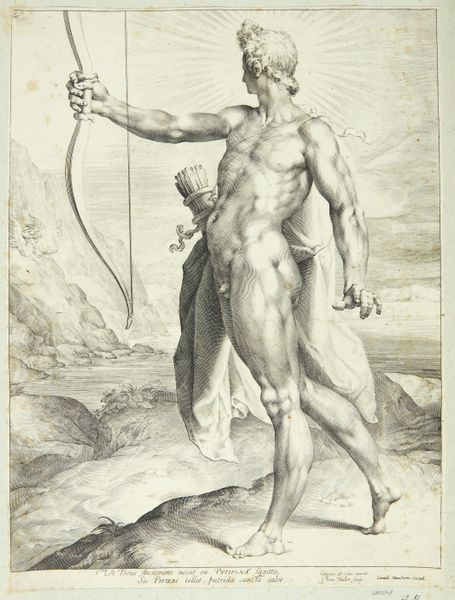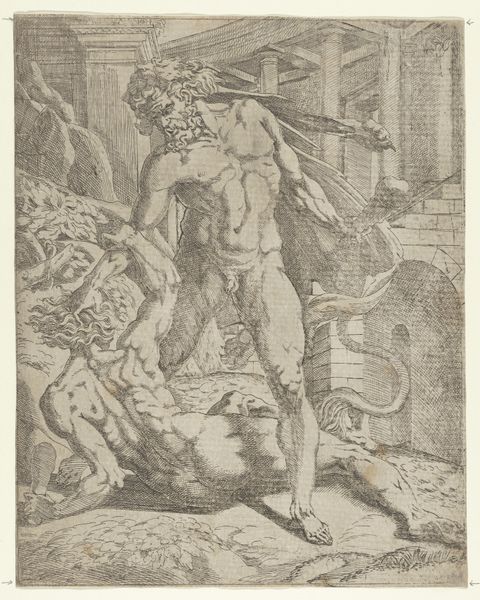
Dimensions: oval sheet: 11 7/16 x 8 13/16 in. (29.1 x 22.4 cm)
Copyright: Public Domain
Cornelis Cort made this engraving, "Cyparissus," in the late 16th century, rendering the metamorphosis of a boy into a cypress tree. The printmaking process is key here. Cort incised the image into a copper plate, allowing for infinite reproduction, which democratized art to a certain extent. Each line is methodically etched, cross-hatched, and burnished, transforming a hard, cold metal surface into an evocative image of flesh and foliage. The fine lines create the illusion of depth and texture, making the figure of Cyparissus and his stag companion stand out against the densely wooded background. This wasn’t just about artistic skill, but about labor, about the physical effort required to produce each print. The making of prints was intimately tied to trade networks and the rise of a market for images. What was once a unique artwork could now be disseminated widely. Understanding the process and the social context allows us to see "Cyparissus" not just as a mythological scene, but as a product of its time, reflecting the changing dynamics of art production and consumption.
Comments
No comments
Be the first to comment and join the conversation on the ultimate creative platform.
